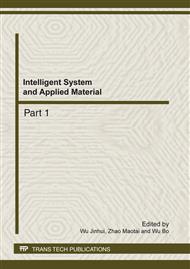[1]
Dong Yi-fan, Zheng Li-duan, Li Xiao-feng. Improve the auxiliary power supply of fast and reliable switching equipment [J], Heilongjiang Electric Power, December 2003, 25 (6): 469-471.
Google Scholar
[2]
Chu Zhao-rui. The fast cutting device of 6 kV auxiliary bus in principle and note [J], Exploration Science and Technology 103.
Google Scholar
[3]
Zhu Da-meng. Power plant based on fuzzy reasoning method of rapid change [J]. Power System Engineering, 2004, 20 (5): 31-32.
Google Scholar
[4]
Zhang Yong-qiang. Fast Cutting Device Application in the Power Plant [J] Petrochemical Industry Application 2009, 28 (7): 94-97.
Google Scholar
[5]
Ma Xiao-na, Li Guang-zhi, Wang Lan. The technical characteristics and applications of the fast cutting devices of the petrochemical supply system [J], Automation Applications 2010 (5): 63-64.
Google Scholar
[6]
Feng Xiao-zong, Wei Yi-hua. The applications of the auxiliary power fast cutting device [J], Electric 2006 (7): 67-68.
Google Scholar
[7]
Chen Xing-hua. 6 KV switching of auxiliary power [J]. Power, 2006, 21 (3): 354-358.
Google Scholar
[8]
Weng Hai-sheng. Fast Cutting device with device considering alternatives to improve plant safety and reliability of electricity [J], Metallurgy Power 2002 (90): 1-4.
Google Scholar
[9]
HALTOUT A, AL-OMOUSHM. Reclosing torq-ues of large induction motors with stator trap- end flux [J]. IEEE Transactions on Energy Conversion, 1996, 11(1): 84-90.
DOI: 10.1109/60.486580
Google Scholar
[10]
Yao Zi-lin. The switching problems of the large-scale power generators of the high voltage power [J]. Zhejiang Electric Power, 1999 (2): 30-31.
Google Scholar
[11]
Li Fa-hai, Zhu Dong-qi. Electrical [M], Science Press, (2007).
Google Scholar
[12]
Yan Guo-hua, Liu Yi-he, Ye Xiu-li. Large transient inrush impulse current induction motor and its control [J]. Relay 1998, 26 (3): 38-42.
Google Scholar
[13]
Chen Yi-ping, Cai Xu. The switching mode of the auxiliary power [J], Electric Power Automation Equipment 2006, 26 (11): 107-110.
Google Scholar
[14]
Duan Gang, Yu Yi-xin. The electrical and mechanical dynamic process of the auxiliary power switching [J], Grid operation, 1998, 22 (1): 61-67.
Google Scholar
[15]
Xu Xiang-dong. The opinions of the quick switching on the auxiliary power system [J], High-voltage electrical 2005, 41 (1): 65-66.
Google Scholar
[16]
Zhang Bao-hui, YIN Xiang-gen. Power System [M], Beijing: China Electric Power Press, (2008).
Google Scholar
[17]
Wang Xiong-hai. Electrical power switching and protection mechanism of the impact of disturbances [J], Zhejiang University 2002, 36 (1): 97-100.
Google Scholar


